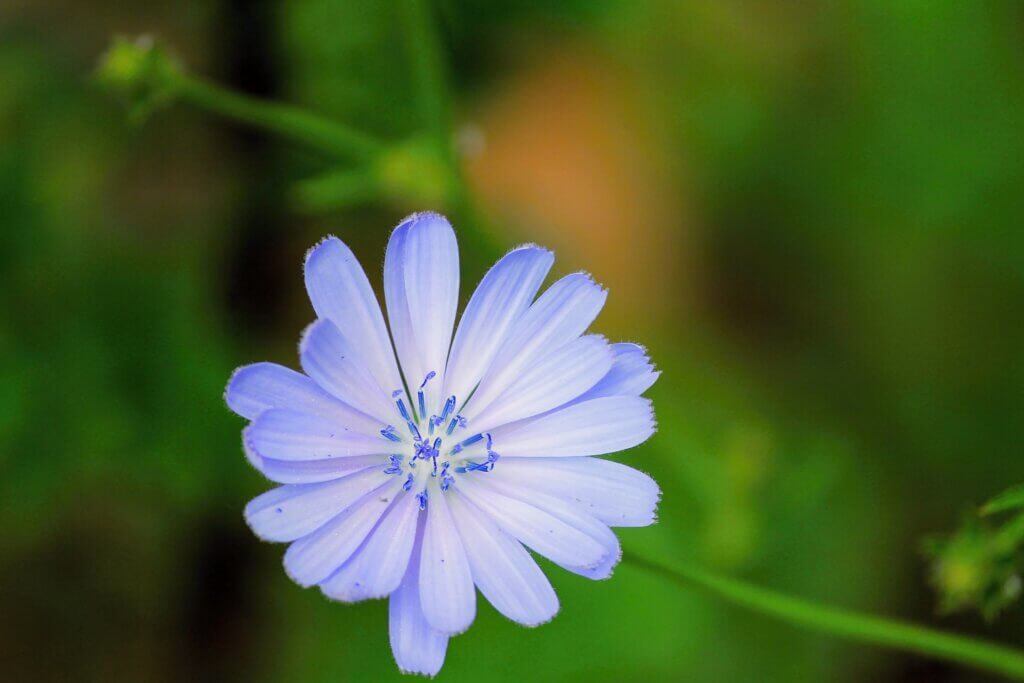Sign up for free
for our newsletter!
for our newsletter!

Loading...
Home » Medicinal Plants » Cichorium intybus
Chicory, a member of the basket family, with its blue/purple flowers is not only the representative of the “Vegetable of the Year” 2005 and “Flower of the Year” 2009 but is now also the medicinal plant of the year 2020. It is often spotted along roadsides in Central Europe and has special medicinal properties. Ingredients such as inulin, lactucin, lactucopicrin, aesculetin, aesculin, chichoriin, umbelliferone, scopoletin and other sesquiterpene lactones and their glycosides are offered by the chicory.
Chicory is used to strengthen digestive organs or as a coffee substitute known as Chicory Coffee, which is extracted from the roots. To stimulate and heal the spleen, liver and gall bladder, it is used in herbal medicine, but also as an external application for skin diseases and eczema. As folk applications, chicory is said to stimulate appetite, stimulate the secretion of digestive juices and have a laxative effect.
Healing effects such as digestive stimulation, invigoration, circulatory strengthening, encouragement, diuretic, diaphoretic, bile stimulating, skin clearing and detoxifying are reported from chicory. The benefits of chicory are used for metabolic disorders, liver diseases, stomach diseases, bile problems, gallstones, physical strengthening, spleen diseases, skin blemishes, overworked red eyes, digestive weakness, constipation, hair loss and elimination of heavy metals.
Chicory is also used as tea, coffee or as a tincture from the roots.
Important ingredients found in the leaves are vitamin C, calcium, iron magnesium, potassium and bitter substances. Inulin and coumarin, among others, are found in the roots.

Medicinal Plants - Herbs are getting more and more important for the research & development sector and for the Pharma Industry in Europe and USA. Traditionally pharmaceutical plants were used ...
Cfm Oskar Tropitzsch GmbH Adalbert-Zoellner-Str. 1 95615 Marktredwitz Deutschland
Tel.:
+49-(0)9231-9619-0
E-Mail:
